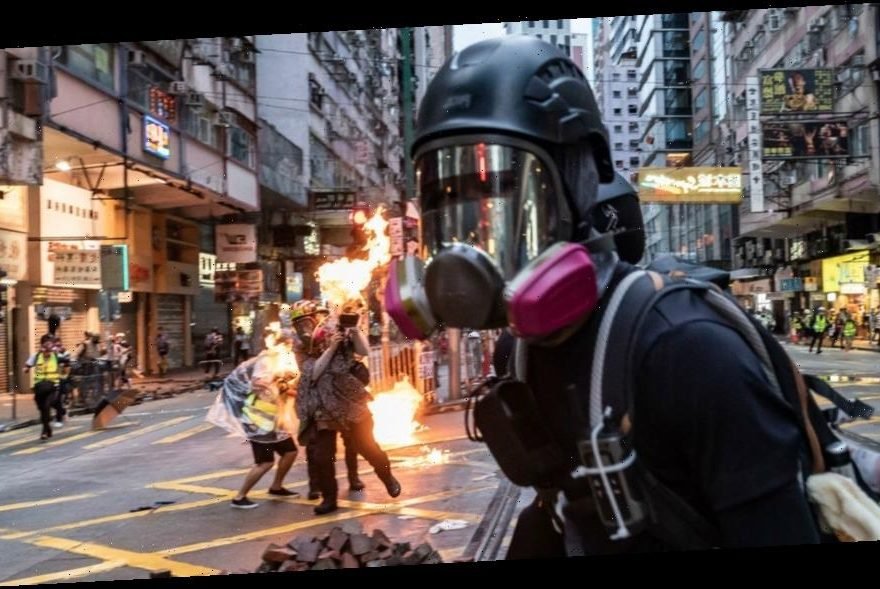- world
A new law aimed at keeping people off the streets backfired, as violence flared in Hong Kong yet again. Many are more concerned about what other restrictions the government is planning.
ByRosalind Adams

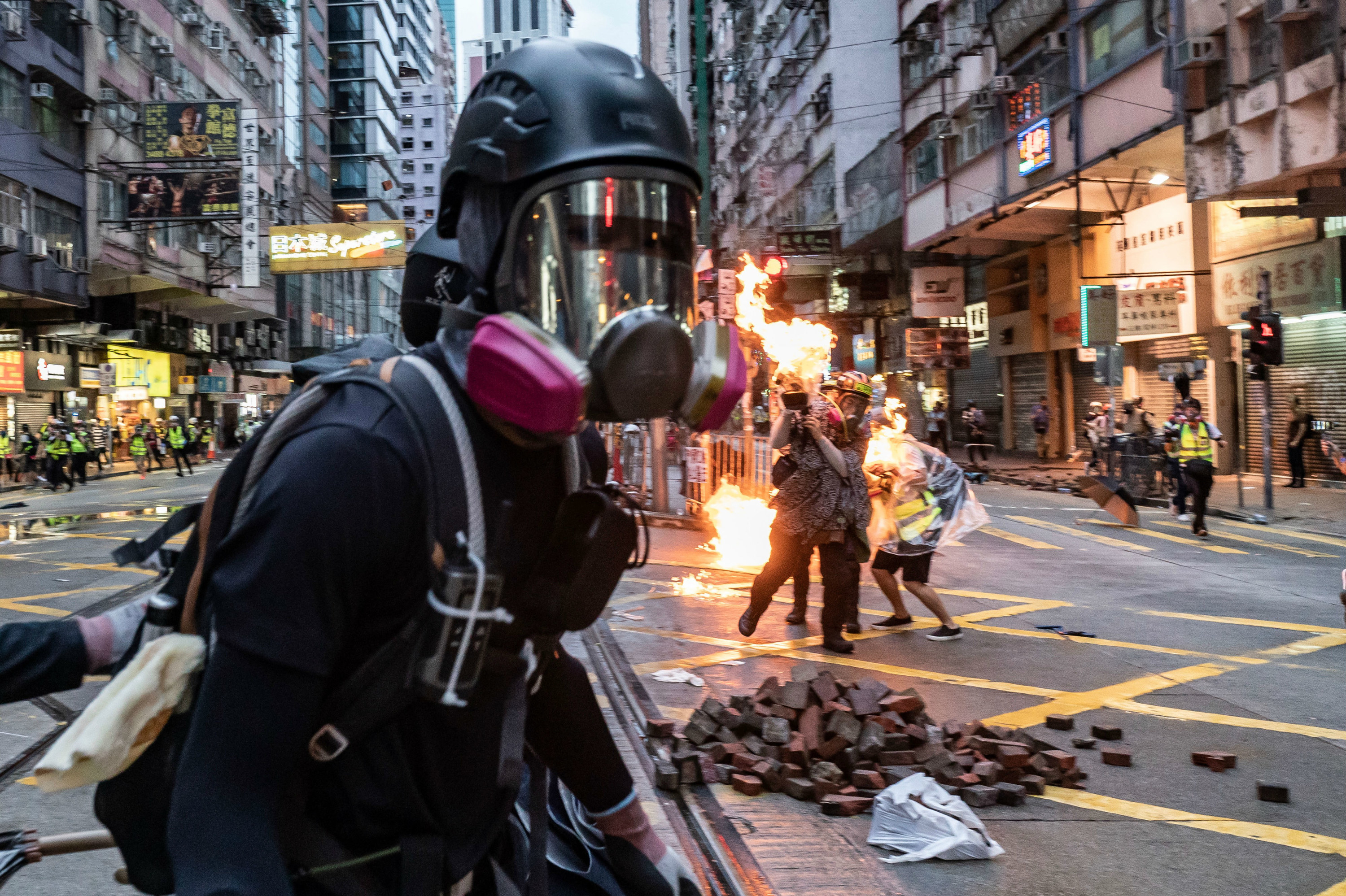
A reporter was struck by a Molotov cocktail in Hong Kong.
HONG KONG — Hong Kong was once again plunged into chaos this weekend as protesters defied a ban on wearing face masks in public.
The government’s use of a colonial-era law was designed to keep people off the streets, but it had the opposite effect as mass protests in their 18th week once again degenerated into violence, as protesters trashed businesses linked to China, police deployed tear gas and rubber bullets, and a 14-year-old boy was shot.
Before the legislation even went into effect, workers trickled out from their offices on Friday and stood in the midday sun on their lunch breaks, protesting the government’s latest move to crack down on the city’s months-long demonstrations.
Many were covering their faces in opposition to the rumored legislation coming that afternoon to ban wearing masks in public. A 24-year old protester walked around with a box of surgical masks, urging people to take one. “I haven’t actually given out that many because everyone already has one,” he said.
“We totally disagree with the law,” said Candy Lee, who had stepped outside the dental clinic where she worked with a couple of her co-workers. Lee said she regularly wore surgical masks after the government recommended doing so in 2003 during an outbreak of SARS. “No matter if I’m sick or not, I just wear masks now for health and to protect my privacy,” she said.
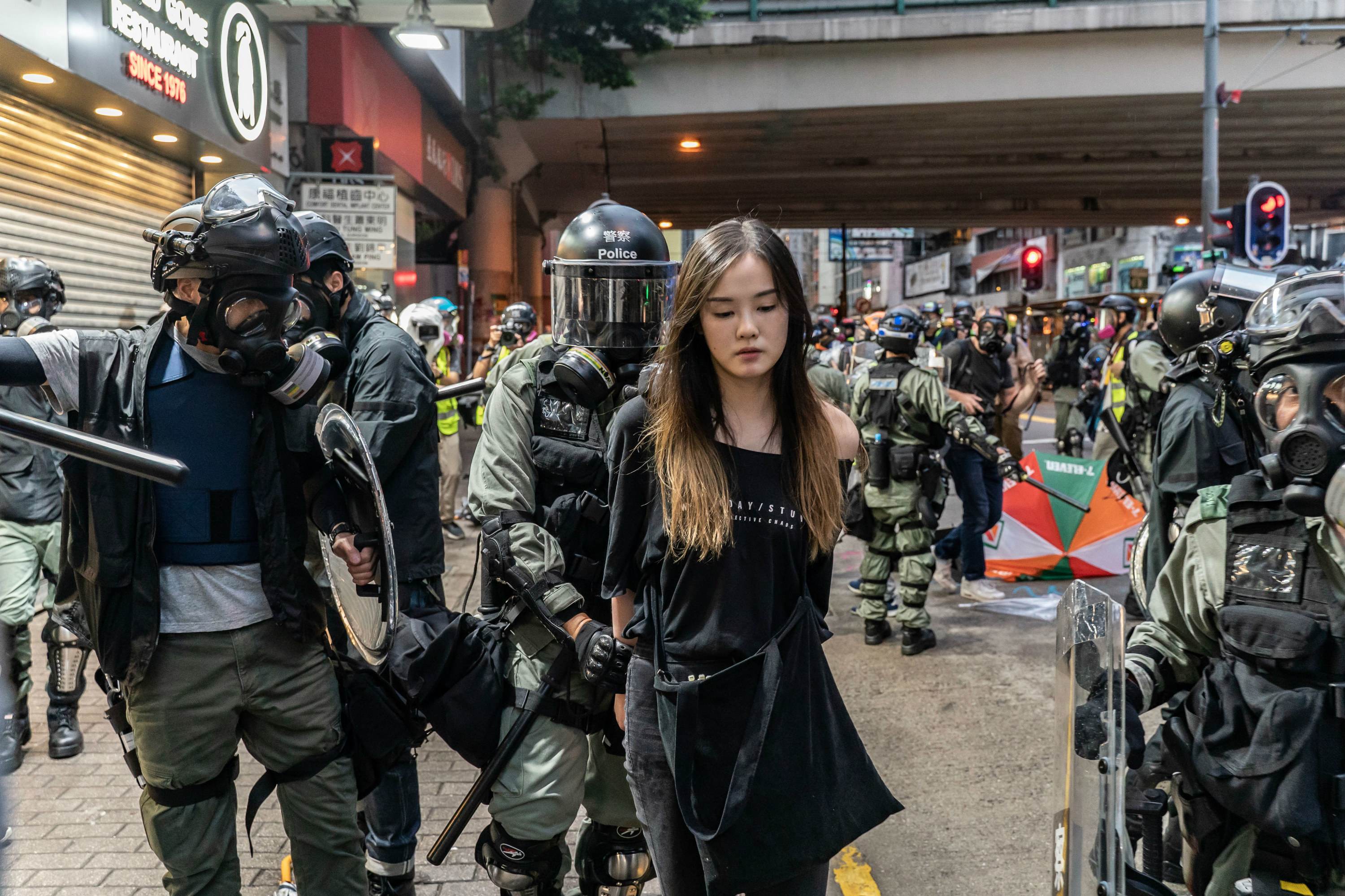
A pro-democracy protester is arrested by police in Hong Kong.
A few hours later, Chief Executive Carrie Lam announced the ban officially, invoking a nearly century old colonial-era emergency rule that allowed her to bypass the legislature. “It is essential for us to stop violence and restore calmness in society as soon as possible,” Lam said. “We believe that the new law will create a deterrent effect against masked violent protesters and rioters.”
So far it has had the opposite effect. The four months of unrest in Hong Kong started over an unpopular bill that would have allowed extraditions to China, which many saw as the end of Hong Kong’s distinction from the mainland. Lam has since said she plans to scrap it. But in renewed protests over the weekend, Hong Kongers made clear that they would not accept this ban on masks either — and that the way the bill was pushed through has only soured residents on the government.
A spontaneous protest grew Friday evening as the details were released, with even well-heeled office workers joining a marching crowd after finishing work. But as the evening wore on, frontliners trashed store fronts and banks and subway stations, setting them ablaze. And heavy clouds of tear gas fired by police filled the air. Protesters shared color-coded guidelines to which businesses to hit — targeting pro-government chains and government offices.
A 14-year-old boy was shot in the leg with a live round by an off-duty police officer after being surrounded by protesters, as confrontations escalated across the city. Earlier this week an 18-year-old was shot by police with a live round, the first such incident since the protests began.
In a message released to the public on Saturday, Lam reiterated her decision to invoke the Emergency Regulations Ordinance which gives her broad powers in times of emergency or public danger. “Hong Kong is facing unprecedented violent attacks and the government need to resolutely use legal means to stop the violence and restore public peace,” she said.
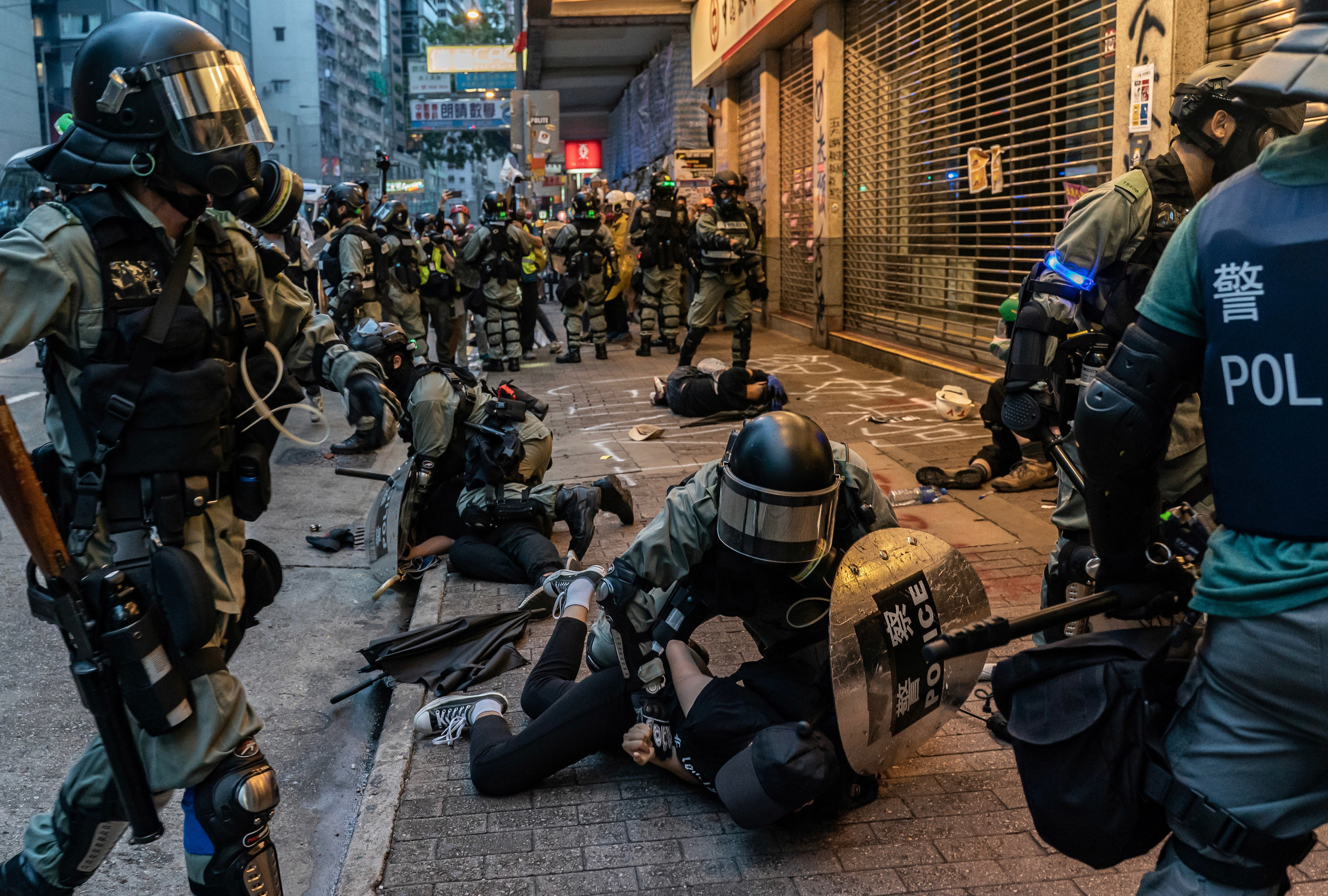
Shops across the city stayed shuttered on Saturday, while others were charred from the fires, and the city’s entire subway system was closed down. It marked the first time the entire system had stopped service since the protests began. Even 7-Elevens announced they would all close by 5 p.m. Some protesters voted for a day of rest in an online poll, though a small group still marched to Central, Hong Kong’s main business district, in protest of the legislation.
On Sunday morning, Hong Kong’s high court heard a challenge to the law by pro-democracy lawmakers, critiquing how the law was put in place by invoking emergency powers. “It might be said that the true public danger we are in is leadership that lacks public sense and is completely out of touch with the ordinary population,” said Gladys Li, the lawyer arguing the case.
An immediate injunction to stop the law was denied, but a judicial review will happen at the end of October.
But by the afternoon, with the subway still partially shuttered, tens of thousands set off in planned marches through torrential rain on both sides of the harbor. Nearly everyone wore masks, defying the ban. The new law carries a penalty of a year in jail and a fine of about $3,000. Disobeying a police order to remove a mask carries an additional 6-month penalty and fine. There are also exemptions for health and occupations that require a mask.
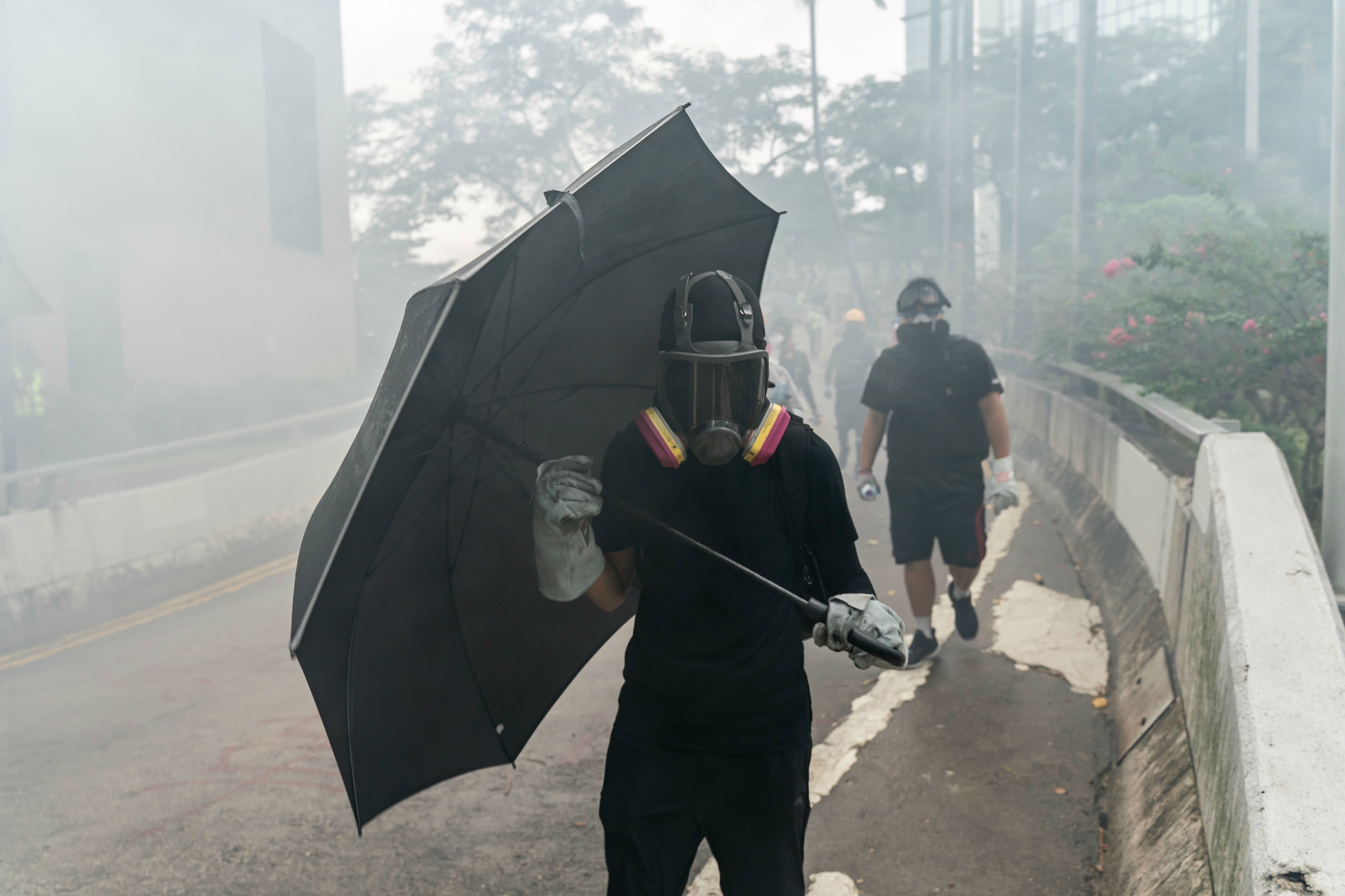
Pro-democracy protesters react as police fire tear gas during a clash at a demonstration in Admiralty district of Hong Kong.
While protesters said they were unafraid of the legislation, many said that what worried them more was what other laws Lam would enact under the emergency ordinance that gives her authority to “make any regulation whatsoever” in the public interest. There has already been speculation that this may be the first of many measures that would not require a vote by the legislature.
“With this emergency law, Carrie Lam is totally not ruled by the law. She can stop our internet connections, she can make a curfew,” said a 19-year-old student in a mask on Sunday. “It feels like she is a king.”
As another protester explained more starkly, “It makes Hong Kong just like China.”
The procession on Hong Kong Island stayed peaceful for a couple of hours as the rain continued. By late afternoon, the law seemed to have only fueled more turmoil as police warned of illegal assembly and fired tear gas in four different districts.
In Wan Chai, after a battle of tear gas and molotov cocktails, police charged at frontliners and made a number of arrests, forcing protesters to remove their masks. A local reporter caught fire from one of the molotov cocktails. And more train stations were attacked — including setting fires, damaging sprinkler systems and attacking CCTV cameras, the MTR corporation said.
In Sham Shui Po, a taxi driver repeatedly rammed into a crowd of protesters, according to reports and videos circulating online. Protesters beat him and left him bloodied after the incident, and later posted his personal information online.
By evening, with protests still roaring, more attacks on China-linked businesses and subway stations, and many ignoring a police alert to stay inside, the subway system again shut down completely .
As protesters remain undeterred by the new law, ongoing demonstrations are already scheduled through the end of the month — the next one for tomorrow evening.
- Someone Is Doxing Hong Kong Protesters And Journalists — And China Wants Them To Keep GoingRosalind Adams · Sept. 21, 2019

Rosalind Adams is world correspondent for BuzzFeed News and is based in Hong Kong, China.
Contact Rosalind Adams at [email protected].
Got a confidential tip? Submit it here.
Source: Read Full Article
